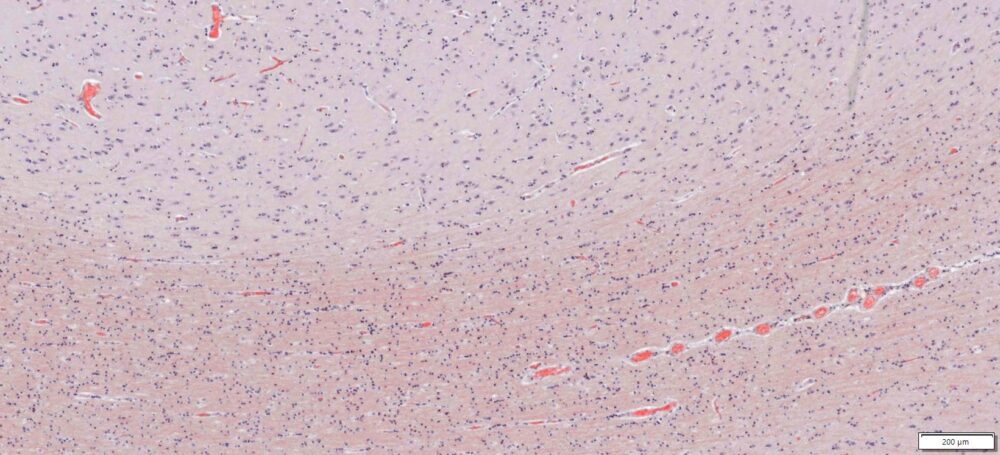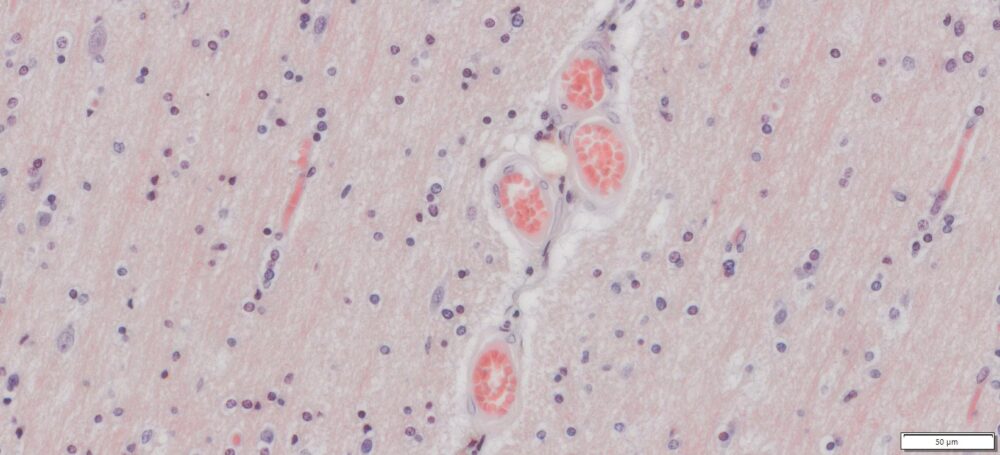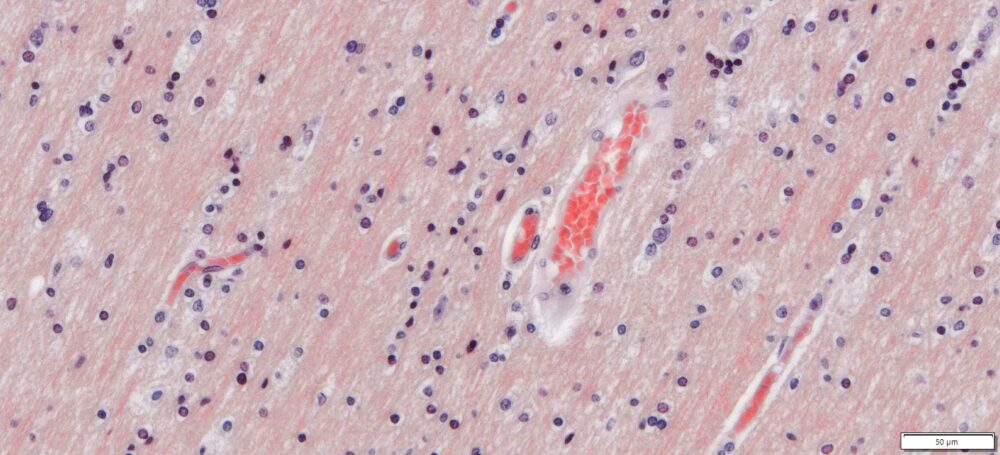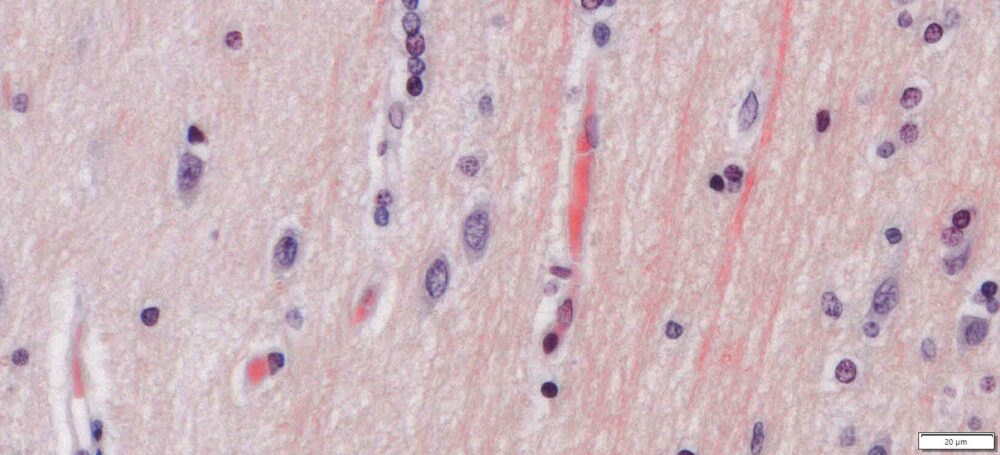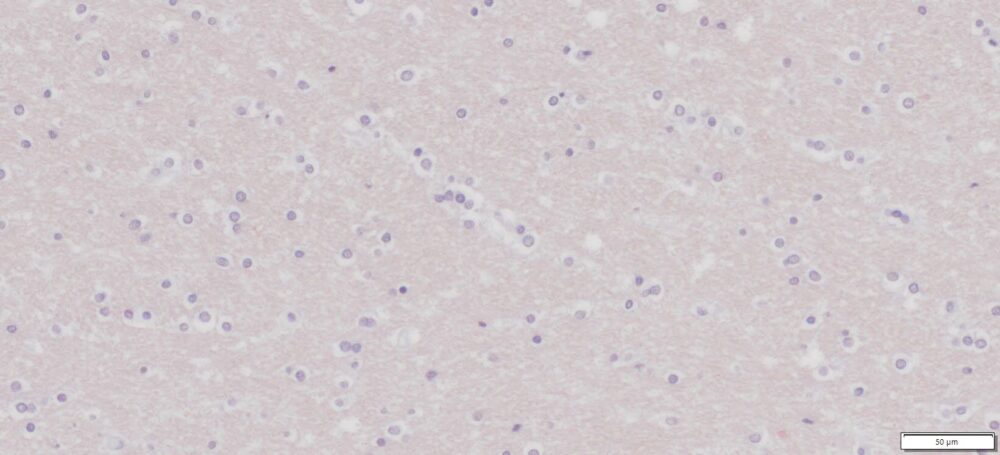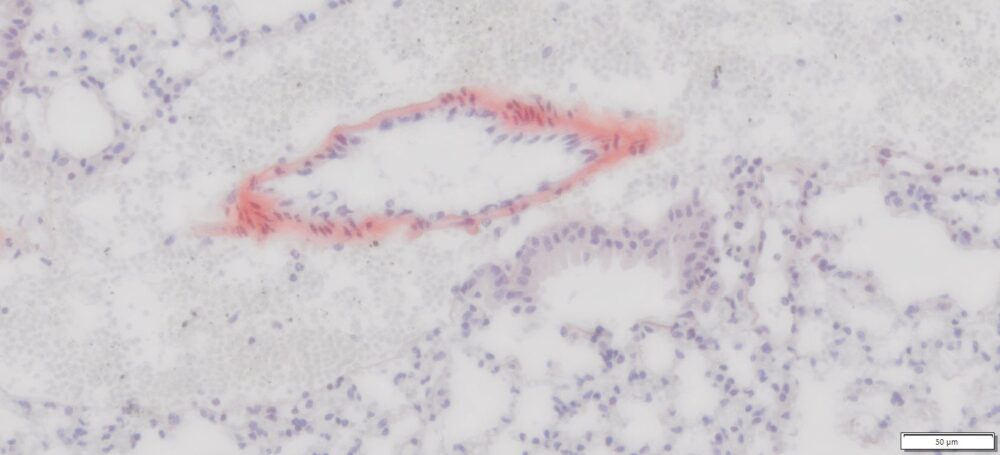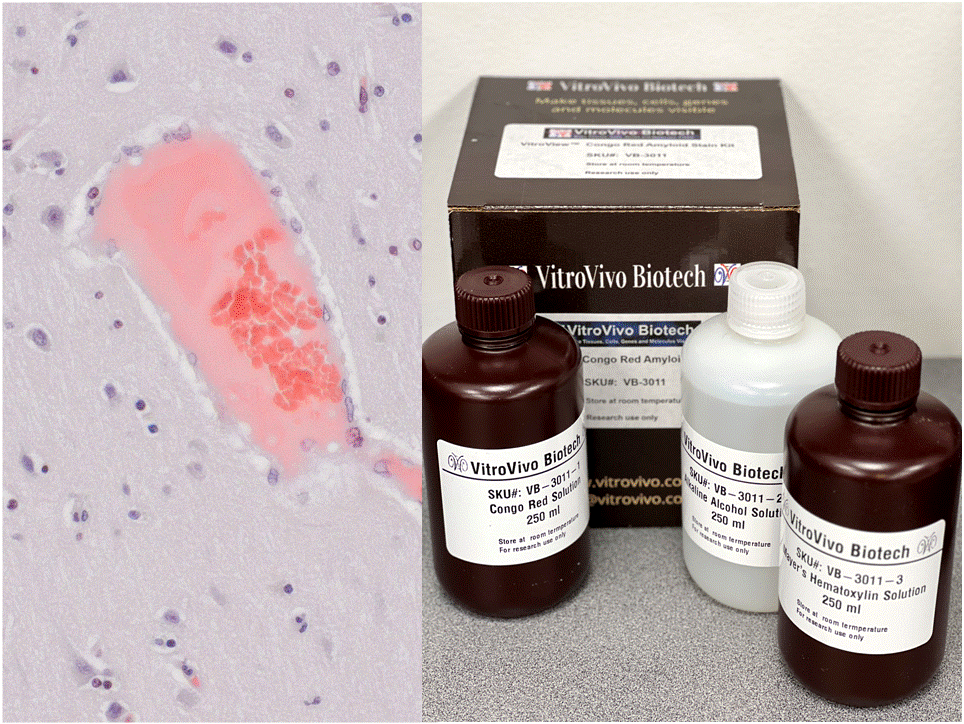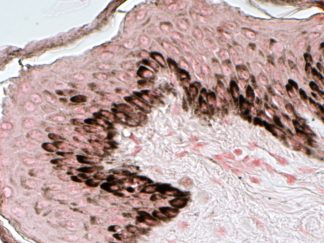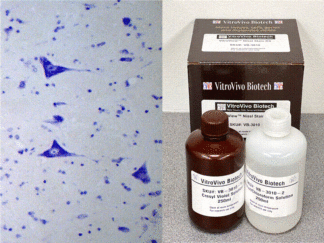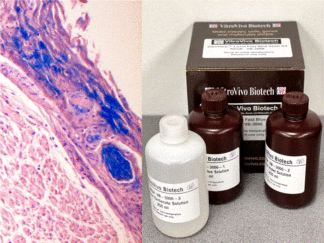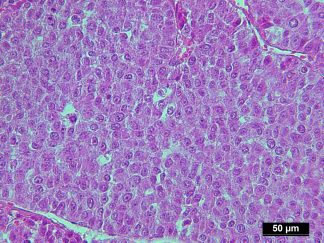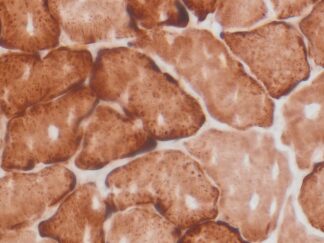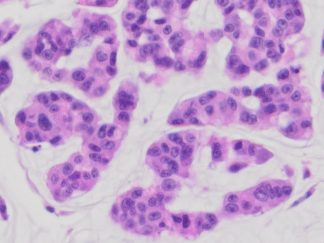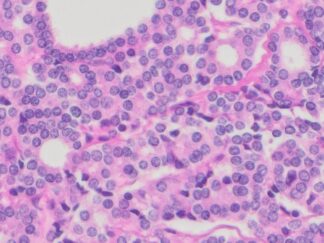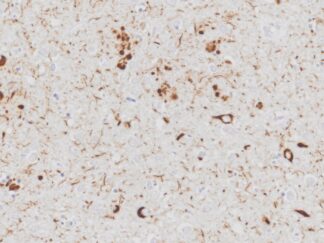Description
Congo Red is a histological stain that has been used to detect the presence of amyloid deposits, including those associated with Alzheimer’s disease. The stain binds to beta-pleated sheet structures, which are characteristic of amyloid fibrils. Therefore, Congo Red staining can be used to visualize beta-amyloid plaques in the brain tissue of individuals with Alzheimer’s disease.
Congo Red Amyloid Stain Kit is used for the detection of amyloid in formalin-fixed, paraffin-embedded tissue sections with amyloidosis, and may be used for frozen sections as well. Amyloid deposits will stain red, while nuclei will stain blue. The thickness of sections is usually 5 µm. However, in cases containing low amyloid deposits, 10µm thick sections will give better results.
Kit Contents
- VB-3011-1 Congo Red Solution ——————–250 ml
- VB-3011-2 Alkaline Alcohol Solution ————250 ml
- VB-3011-3 Mayer’s Hematoxylin Solution —- 250 ml
Storage Condition:
Store at room temperature.
Protocol
- For paraffin-embedded tissue sections, deparaffinize and hydrate to 70% alcohol. Rinse in distilled water. For frozen sections, dry sections for 5 minutes. Fix sections in neutral formalin solution for 20 minutes. Rinse in distilled water.
- Stain in congo red solution for 15-20 minutes.
- Rinse in distilled water.
- Differentiate quickly (5-10 dips) in alkaline alcohol solution.
- Rinse in tap water for 1 minute.
- Counterstain with Mayer’s hematoxylin for 30 seconds.
- Rinse in tap water for 2 minutes.
- Dehydrate through 95% alcohol, 2 changes of 100% alcohol, 3 minutes each.
- Clear with 3 changes of xylene (5 minute per change)
- Mount coverslip onto glass slide with Permount or some other suitable organic mounting medium.
Results
- Amyloid, elastic fibers, eosinophil granules ——– red
- Nuclei —————————————————————- blue
Positive Controls
Know amyloidosis containing tissue (i.e. Alzheimer’s disease).
Note: This product is intended for research purposes only. This product is not intended to be used for therapeutic or diagnostic purposes in humans or animals.
Precautions: Handle with care. Avoid contact with eyes, skin and clothing. Do not ingest. Wear gloves.
More Images
